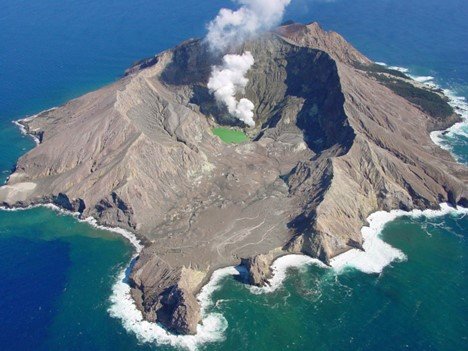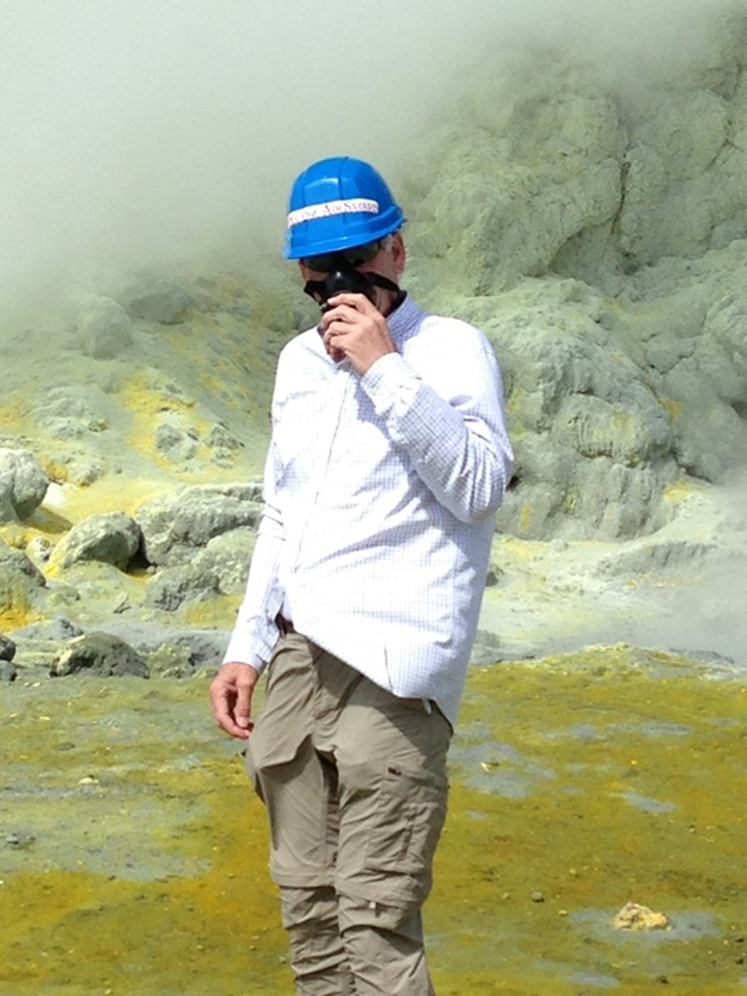Geochemistry in Hot Water: Hydrothermal Research in ESCI
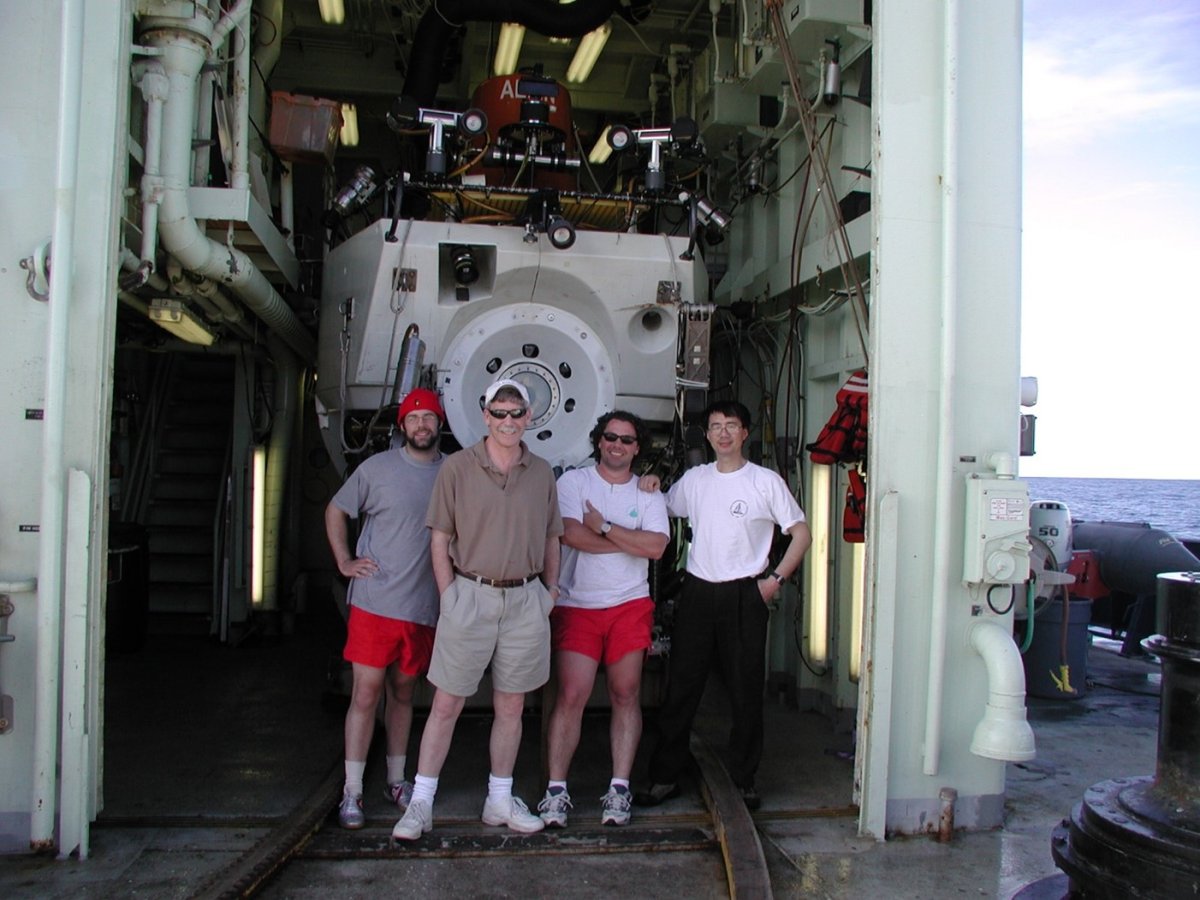
Written by W.E. Seyfried, Jr.
Although “blue water” (deep-sea) oceanography might not come to mind when first considering the range of research activities that exist at the University of Minnesota, especially considering that Minnesota is the “Land of Ten-thousand Lakes”, Bill Seyfried, his students, and post-docs, in the aqueous geochemistry research group have long been interested in this very topic. The focus of this research is not the sun-drenched surface ocean, but the perpetually dark ocean floor of the volcanically active Mid-Ocean Ridges. It is here that ocean floor diverges to accommodate magma from below, driving plate tectonics. Magma, in turn, fuels hydrothermal activity, giving rise to spectacular geyser-like vents spouting metal and sulfur bearing fluids at temperatures as high as 400°C (Fig. 1). Mixing with seawater, these fluids cool and form economically significant ore deposits, while providing environments that sustain noteworthy microbial communities that offer possible clues to the origin of life on Earth. Unquestionably, deep-sea vents and related microbial ecosystems represent a truly transformative discovery in the Earth and Ocean Sciences. Even now, some thirty years after discovery, they are still sharing their secrets about the inner workings of planet Earth and possibly other “ocean worlds” elsewhere in the universe.
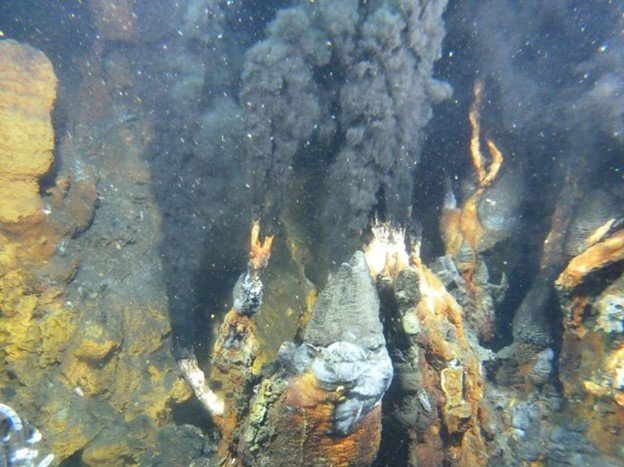
The transformation of cold, alkaline seawater to hot, acidic vent fluid, is associated with large scale compositional change. For example, Mg is quantitatively removed from seawater and replaced by Ca and Fe. Thus, the geochemical cycles of these and related elements are greatly affected, both in the modern and ancient ocean. The largely inaccessible regions of the ocean crust from which these chemical changes occur are difficult to constrain for experimentation, underscoring the need to acquire new mineral solubility data. To accomplish this, however, a new generation of experimental equipment was necessary. Thus, with support from the University of Minnesota and the National Science Foundation, hydrothermal reactors were built and used to assess changes in the chemistry of fluids coexisting with mineral reactants at chemical and physical conditions that simulate reactions at the magma-hydrothermal interface, far below the ocean floor at mid-ocean ridges (Fig. 2). One of the early discoveries identified the effect of temperature and pressure on separation of dissolved chloride in seawater into vapor and brine phases, a characteristic feature of deep-sea vent fluids. At the same time, the need to measure ever smaller concentrations of trace transition metals in experimentally derived hydrothermal fluids became clear, if the role of these metals on microbial metabolism at vents was to be achieved. Thus, state of the art analytical facilities in the aqueous geochemistry labs were required and obtained with support from NSF.
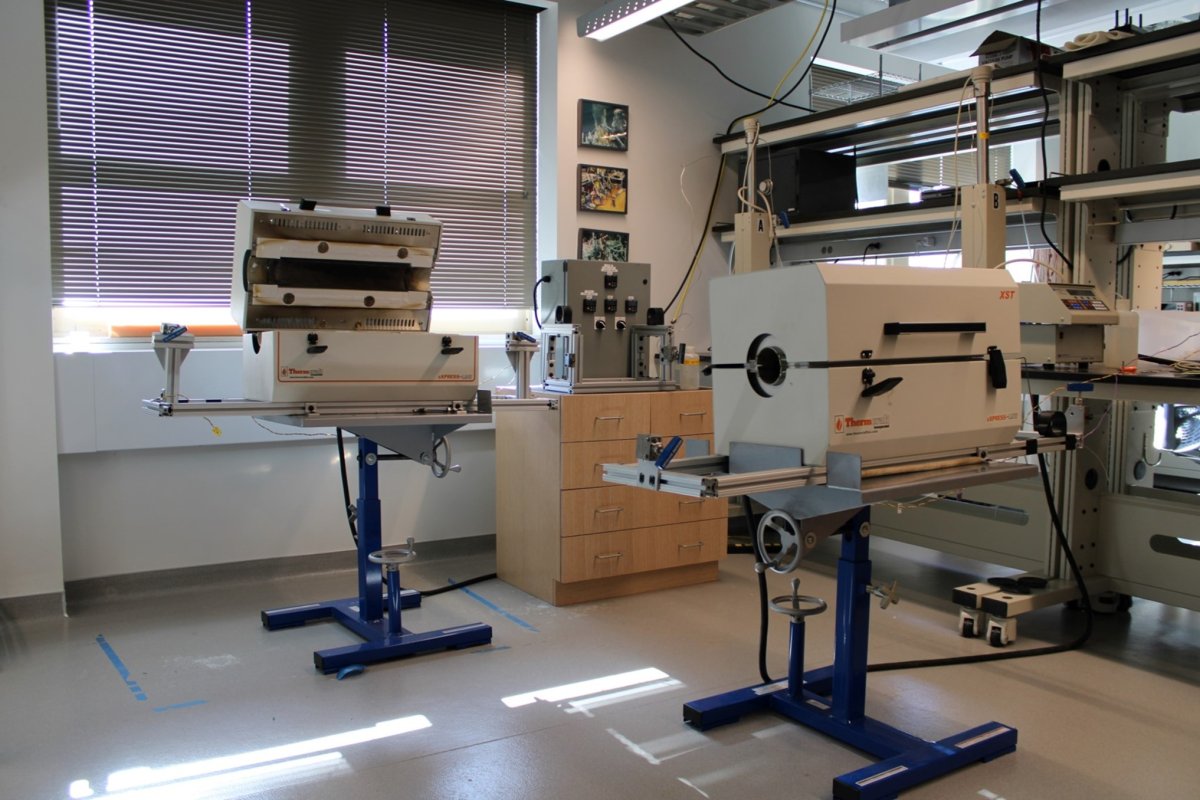
The experimental and analytical facilities of the aqueous geochemistry lab led the charge for the development of in-situ chemical sensors (Fig. 3) and novel seafloor sampling systems that could be used to monitor real-time chemistry of seafloor vent fluids. Deployment of these new sensor and sampling systems, however, required the use of Deep Submergence Vehicles, such as DSRV (Deep Sea Research Vessel) “ALVIN” to access deep sea vent fluids more than a mile below the sea-surface, where the ambient pressure is on the order of 5,000 pounds per square inch! Seyfried has now led and/or participated in more than 10 expeditions to volcanically active regions of the seafloor in three different oceans. In every case, he was joined by ESCI graduate students (Figs. 4 and 5) and post docs. The skill, enthusiasm, and commitment of the students and researchers has played a central role in the success of the aqueous geochemistry research program at the University of Minnesota.



It is important to emphasize that one of the most noteworthy advances in deep submergence science and sampling of hydrothermal vent fluids, is the Isobaric Gas-Tight (IGT) sampler developed by Jeff Seewald, Senior Scientist at the Woods Hole Oceanographic Institution. Jeff received his MSc and Ph.D. degrees from the Department of Geology and Geophysics at the University of Minnesota, where he developed a lasting interest in hydrothermal research and instrument design. A key element of the IGT sampler is that when triggered at seafloor vent sites, it fills at a controlled rate, while maintaining ocean bottom pressure, effectively precluding degassing of the fluid sample on ascent to the surface for processing. There can be no question that the IGT sampler has played a transformative role in our understanding of geochemical controls on the origin and evolution of seafloor vent fluids.
Recently, the aqueous geochemistry research group designed and built a novel vent fluid sampler that took full advantage of IGT capabilities. In this case, however, an integrated system of 12 such units were linked to a computer-controlled system of individually operated valves. This, so-called, serial sampler was powered by the NEPTUNE seafloor cabled array operated by Oceans Network Canada. The seafloor cable extends to vent sites in the Main Endeavour Hydrothermal Field, which is on the Juan de Fuca Ridge, approximately 500 miles off the coast of British Columbia in the Northeast Pacific Ocean. The breakthrough nature of this new instrumentation is that on-demand commands can be delivered through the internet to initiate the opening and closing of valves needed for vent fluid sample acquisition (Fig.6). Deployed in 2019, nine fluid samples were remotely obtained over an approximately twelve-month interval. The unusually high-quality vent fluid samples revealed for the first-time chemical effects induced by tracked changes in temperature and seismic (earthquake) activity in the subseafloor in the vicinity of the vent site at which the sampler was deployed. Presently, the sampler is being again prepared for use this summer in cooperation with scientists and engineers at Oceans Network Canada and the University of Victoria, Canada.
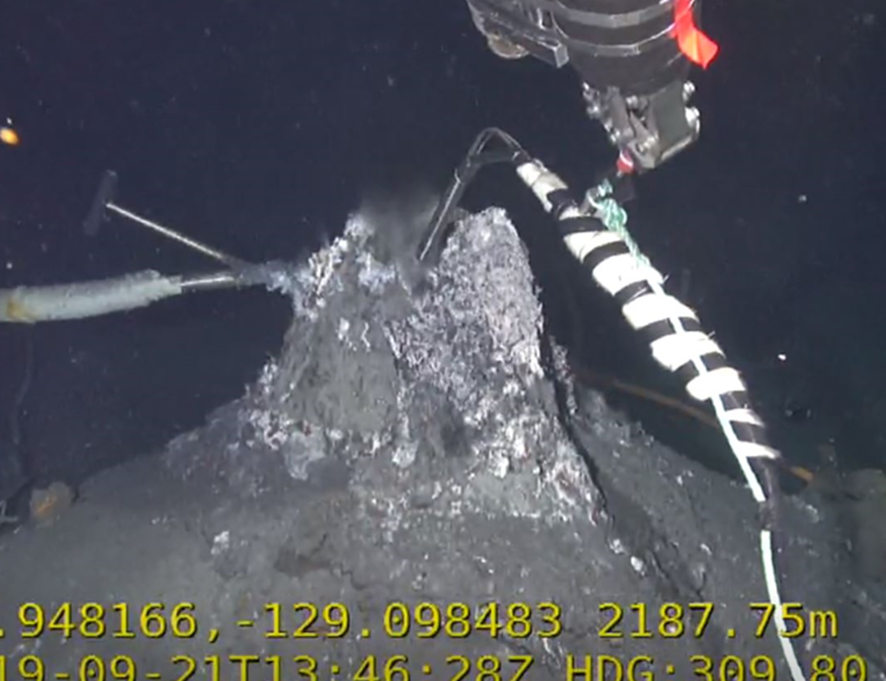
Sampling deep sea hydrothermal vent fluids present unique challenges imposed by the physical conditions that exist on the seafloor at mid-ocean ridges. Much can be learned about these systems, however, from studying volcanically active subaerial systems, where near surface magmatic activity gives rise to heat and mass transfer processes that can overlap with their subseafloor equivalents. The sulfurous vapor dominated hydrothermal fluids and associated microbial communities intrinsic to the geysers and hot springs at Yellowstone, Iceland, the North Island of New Zealand, provide noteworthy examples of where this is the case (Fig. 7a and 7b).
